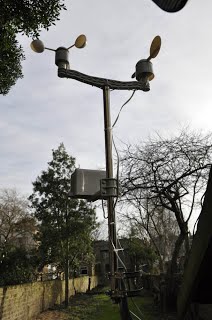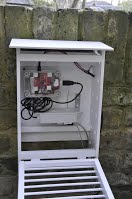I have been making slow but steady progress on the weather station, although power usage continues to be a bit of an issue. The Python code on the Pi is now running resiliently with some decent logging. There are enveloping shell scripts and running as daemons via init.d processes. A good example of how to do it is on this blog: http://blog.scphillips.com/2013/07/getting-a-python-script-to-run-in-the-background-as-a-service-on-boot/ My Python coding is slowly shaping up - I've even been getting to grip with objects. I will post something when I dare to show it. I also invested in a mini Stevenson Screen just to give me a bit of space and keep the gear protected. The next stage is to start passing events between the process which gets the data from the weather station and the display daemon - so there are no unnecessary screen refreshes when the data has not been updated. At the weather station sensor end, flat batteries are a constant issue, despite a decent sized solar cell and a 6Ah LiPo battery. The XinoRF is quite a power-hungry beast - 95mA through my meter. The Sunny Buddy charger is set at 450mA by default and even when really cranked up with sensor resistors it's not putting much more power through than that. A few hours of sunshine is the best to be hoped for at this time of year and my garden is pretty shady. Without solar the setup runs for about 48 hours, with solar about 90. To drop the power usage, I've picked up a Ciseco RFu-328 which is aimed at low power applications. With a bit of recoding and some improvising I've made a breadboard prototype that runs of an AA battery. The plan in to produce something that will run off a basic solar setup and maybe 4 AA rechargables. That setup will also keep the costs down |
Pi Blog >

